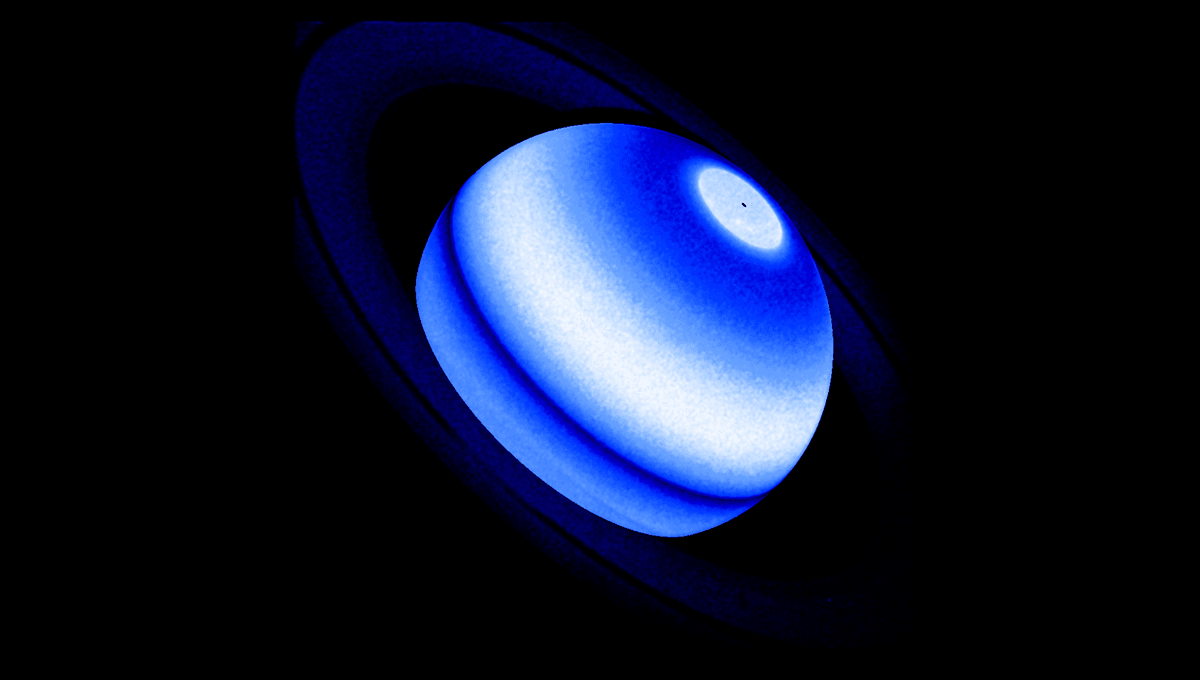
Decades of observations of Saturn were hiding a major feature in plain sight. The region of the atmosphere closest to the ring is hotter. Hydrogen shines in a particular wavelength more there than elsewhere across the planet. And the heating is due to a rain of ice particles coming from the rings.
The spectacular rings of Saturn are not a constant feature of the planet but a temporary one. A hypothesis is that the destruction of a moon formed them 150 million years ago and since then the planet has been slowly losing them. This rain is affecting the atmosphere.
“Everything is driven by ring particles cascading into the atmosphere at specific latitudes. They modify the upper atmosphere, changing the composition. And then you also have collisional processes with atmospheric gasses that are probably heating the atmosphere at a specific altitude,” said Lotfi Ben-Jaffel of the Institute of Astrophysics in Paris and the Lunar & Planetary Laboratory, University of Arizona, in a statement.
“Though the slow disintegration of the rings is well known, its influence on the atomic hydrogen of the planet is a surprise. From the Cassini probe, we already knew about the rings’ influence. However, we knew nothing about the atomic hydrogen content.”
The observation that showed this to be the case comes from NASA’s Hubble Space Telescope, the international Cassini probe that studied Saturn for 13 years, as well as the veteran Voyager 1 and 2 spacecraft and the retired International Ultraviolet Explorer mission. But it was not just a question of looking at the data. The data had to be calibrated in the same way. Using the high-precision Hubble measurement as the standard, the researchers were able to see that the effect is indeed real.
“When everything was calibrated, we saw clearly that the spectra are consistent across all the missions. This was possible because we have the same reference point, from Hubble, on the rate of transfer of energy from the atmosphere as measured over decades,” Ben-Jaffel explained. “It was really a surprise for me. I just plotted the different light distribution data together, and then I realized, wow – it’s the same.”
Saturn’s atmosphere is affected by the seasons. Its polar region changes color, for example. But the decades of data show that this phenomenon is always there, making the ice rain from the rings the best explanation for the observations. And, it might be useful for the study of exoplanets and maybe even the discovery of exo-rings.
The study is published in The Planetary Science Journal.
Source Link: Rains From Its Rings Are Heating Up Saturn's Atmosphere